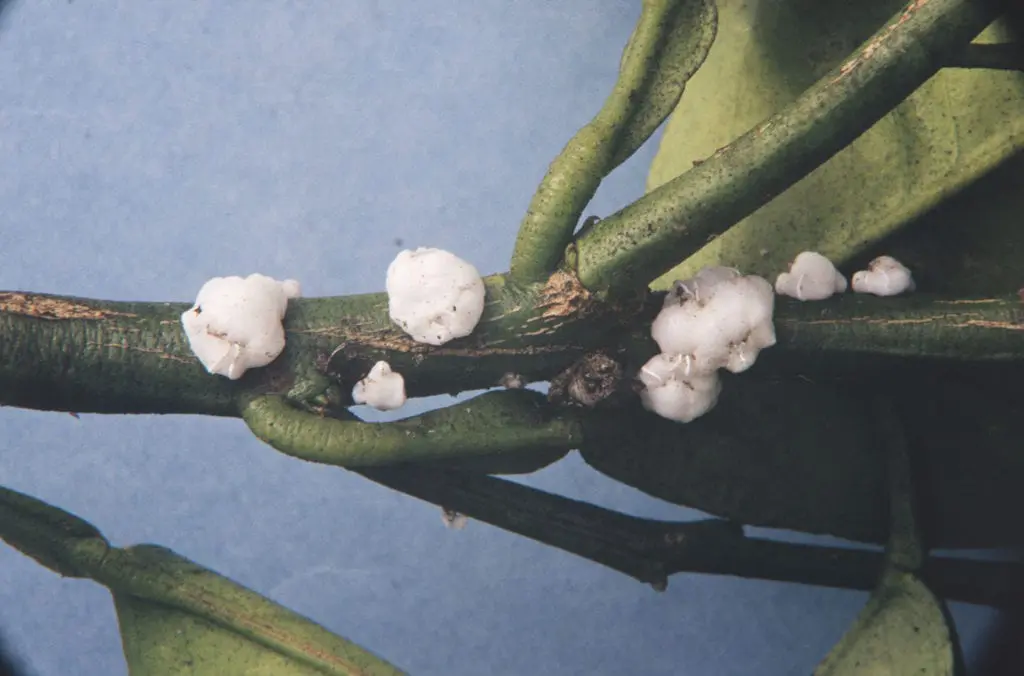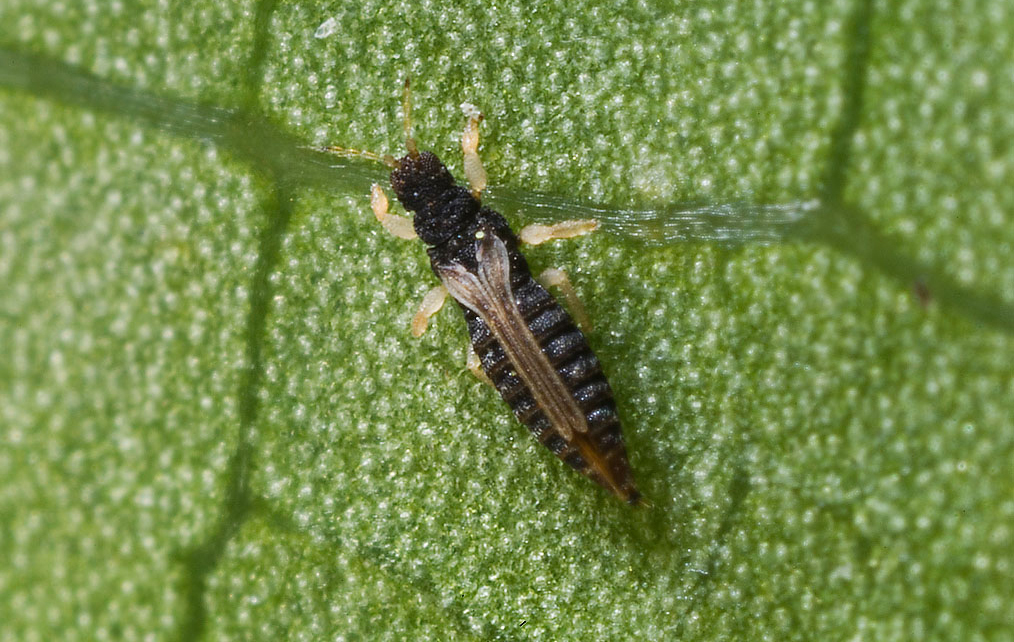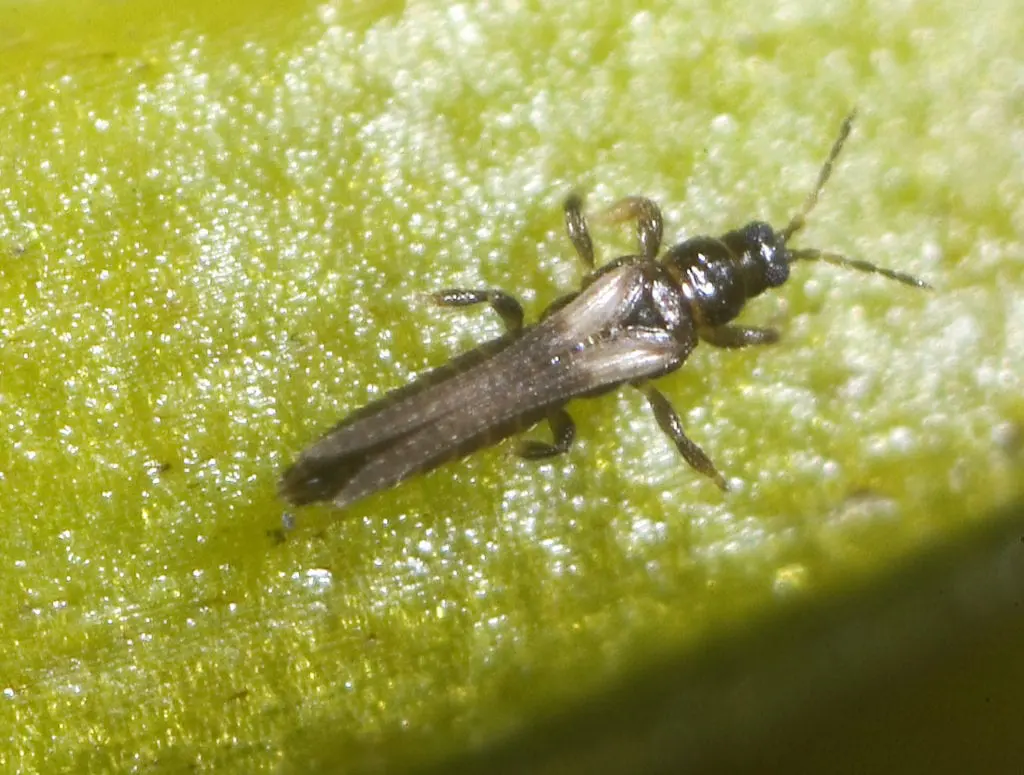Leafroller
The term leafroller includes a range of species:
| brown-headed leafroller | BHLRs | Ctenopseustis obliquana and Ctenopseustis herana |
| black-lyre leafroller | BLLR | Cnephasia jactatana |
| green-headed leafroller | GHLRs | Planotortrix excessana and Planotortrix octo |
| light brown apple moth | LBAM | Epiphyas postvittana |
Both leafroller caterpillars and eggs are quarantine pests, however only caterpillars damage fruit and leaves, as only these feed by chewing.
Eggs
- Laid in groups of 10 to 50.
- Laid in an overlapping pattern to form a smooth mass or ‘raft’.
- No webbing or fluff.
- Initially pale green and change to pale yellow before hatching.
- Eggs are flat and oval in shape.
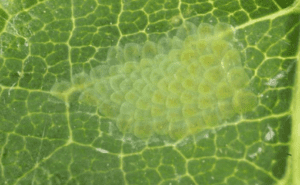
Larvae (caterpillar)
- Newly hatched larvae are very small (2mm in length).
- Pale-green head and body.
- Larvae eventually reaching 15 – 20mm in length.
- The larval body will stay green but the head colour will change from green to black to reddish-brown.
- DO NOT arch their bodies when they move.
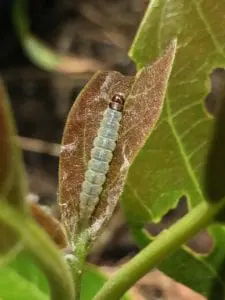
Pupae
- The pupa is bright green when first formed.
- Rapidly changes to pale brown and then to dark brown prior to adult emerging.
- Usually 10-13mm long.
- Typically found in a silken cocoon.
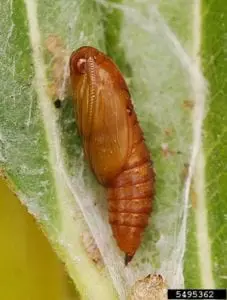
Adult (moth)
- Wings are brown and tan
- Approximately 8-15mm in length with a wing-span of 15-30mm.
- Characteristic bell shape.
- There is considerable variation between individuals.
- Dispersal stage which spreads the species around.
Fruit
- Caterpillar feeding results in obvious fruit scarring – shallow oval gouges.
- Leafroller feeding damage on fruit may cause the fruit to become misshapen.
- Caterpillars often tuck themselves against the stem join at the fruit for protection and are harder to detect.

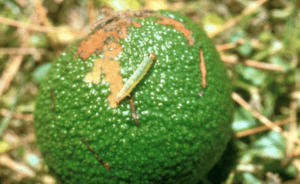
Life cycle
- Adults (moths) lay eggs on the upper surface of leaves and on fruit.
- Eggs are laid in overlapping masses that can contain a few to over 60 eggs.
- Larvae (caterpillar) infest new growth shoots during the spring/summer flush.
- Larvae generally grow through 5-6 instars before pupating.
- 3 or 4 generations each year.
- There is no over-wintering stage and the life cycle continues although at a much slower pace as temperatures drop.
- All life stages are present at any time.

Where and when to monitor
- Monitor for caterpillars using a 10x hand lens.
- Hatched egg rafts are generally easier to find than unhatched.
- Caterpillars will be found where fruits growing in clusters as they will often feed between the protection of contacting surfaces.
- Pupa can be found among webbing in shoot tips and leaves and damage on trees.
- Most damage to fruit occurs in the first months after fruit set but can occur at any time of year.
- Development is faster in summer months than during winter, therefore the time between monitoring rounds in winter may be generally longer.
Implications
Leafroller’s are a quarantine pest therefore market access restrictions will apply if it is found on fruit in the packhouse.

